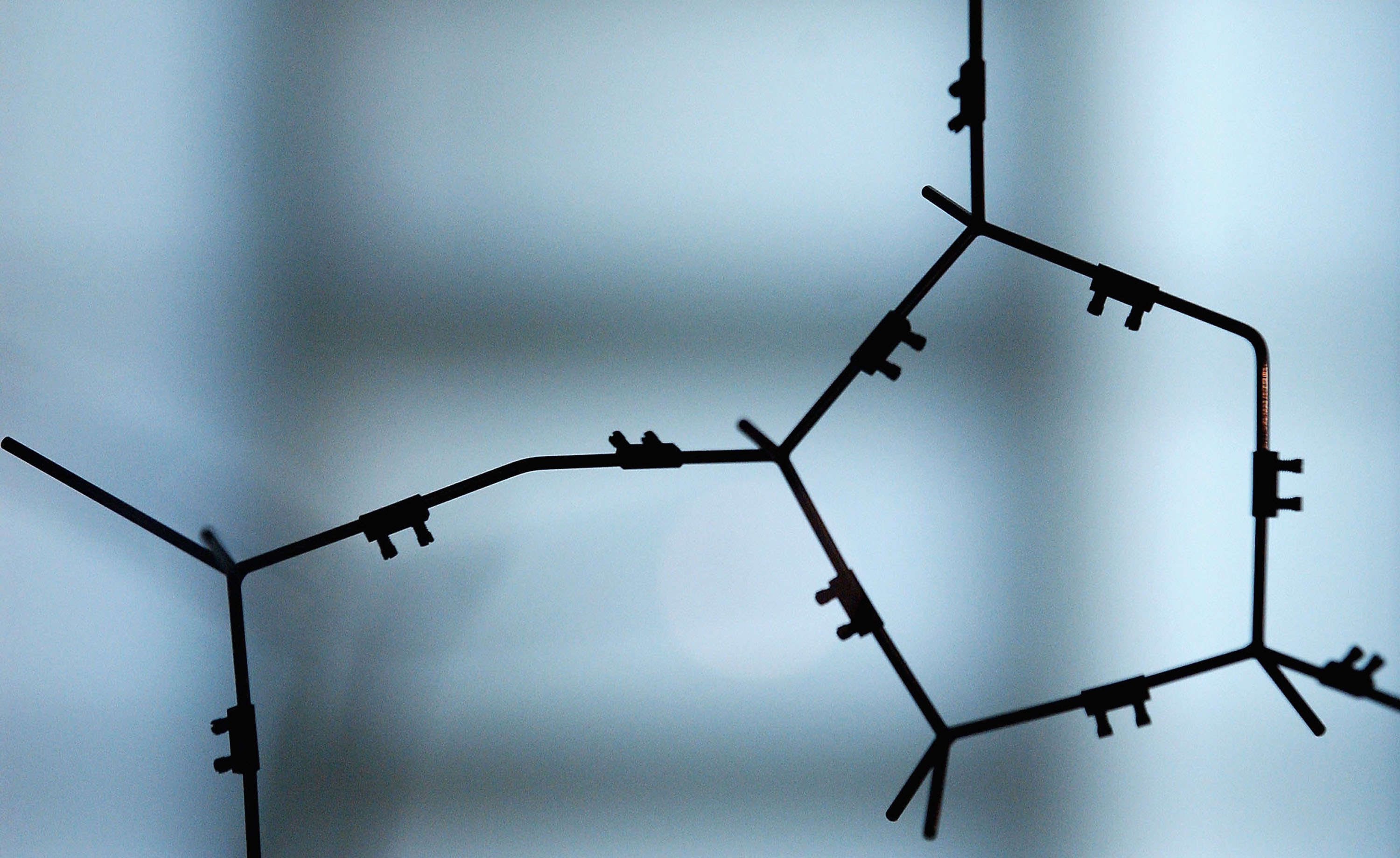Create a free profile to get unlimited access to exclusive videos, sweepstakes, and more!
DNA 'dark matter' could create species we never imagined

If our bodies are a reflection of the universe, then satellite DNA is all the dark matter lurking within.
Unlike actual dark matter, what was once considered “junk DNA” is detectable. It was just that nobody really thought the long strands of extra genetic stuff that constantly repeat themselves had much use until now. Turns out it actually does have a function. Satellite DNA prevents incompatible creatures from producing viable offspring, which can end up creating new species. It could also someday bring critically endangered species back from the brink.
About 10% of the human genome is made of this "dark matter." Scientists had observed it before in many eukaryotic life-forms, or anything with cell nuclei, but biologists Madhav Jagnnathan and Yukiko Yamashita have taken knowledge of these mystery strands to the next level by studying how it behaved in fruit flies, or Drosophila melanogaster.
“Although rapid evolution of pericentromeric satellite DNA repeats is theorized to promote hybrid incompatibility, how divergent repeats affect hybrid cells remains poorly understood,” they said in a study now on the preprint server bioRxiv, which goes even deeper than their previous investigation into these mysterious genes.
Fruit flies are often used in genetic research. What are otherwise thought of as pests were used to prove that chromosomes were responsible for inheritance and how some mutations happened. Their balancer chromosomes, which prevent genetic material from rearranging in bizarre ways of attaching itself to incompatible material from other organisms, became important in following studies. Fruit fly DNA even proved that genes can contribute to higher brain function and also showed which genes contribute to the development of an embryo.
Jagnnathan and Yamashita saw the usefulness of satellite DNA when they deleted a gene. This gene codes for a protein known as prod (proliferation disrupter), which binds DNA and recognizes certain repeating patterns of satellite DNA. It is thought to possibly be able to intervene in a process that turns the satellite strand into a superhelix—which is made of proteins and acids that are already in helix form. Prod might also have a part in compacting and amplifying satellite DNA strands in chromocenters.
Chromocenters are made of DNA and proteins densely packed together. Without prod, which is unique to fruit flies, the researchers saw that the insects’ genes, which need to be organized inside the nucleus a certain way to keep them alive, scattered beyond the nucleus uncontrollably and became warped, killing them. But what does this have to do with breeding and speciation? When female fruit flies were bred with a different species, their hybrid offspring could not make it. Satellite DNA keeps hybridization from happening in many species by doing what Jagannathan and Yamashita did artificially. It scatters DNA all over.
“Ineffective clustering of divergent satellite DNA in the cells of Drosophila hybrids results in chromocenter disruption, associated micronuclei formation and tissue atrophy,” they said.
Viable offspring won’t come out of two species that have different proteins which bind satellite DNA, especially if the satellite DNA is fast to evolve. To see if this was definitely the reason why the flies could not produce offspring that lived too long, the researchers rearranged their genomes to find out what would happen. The insects produced thriving offspring after that. If it was possible with fruit flies, it could be possible with other creatures that are close to disappearing off the face of the Earth if we don't do something soon.
Throughout evolution, species that realized they were genetically incompatible when their young did not survive would eventually go on and diverge into different species. The same strands of DNA that kept hybridization from happening are now being looked at for possibly saving species that are on the edge of extinction, such as the kakapo. There are hardly over a hundred of these New Zealand birds left, and the remaining population has been so inbred that their eggs often do not hatch. Hybridization might be the last hope they have for survival.
If you can imagine species making a comeback after being on the verge of vanishing, then you can imagine the unreal things DNA that used to be thought of as useless could possibly do.



























